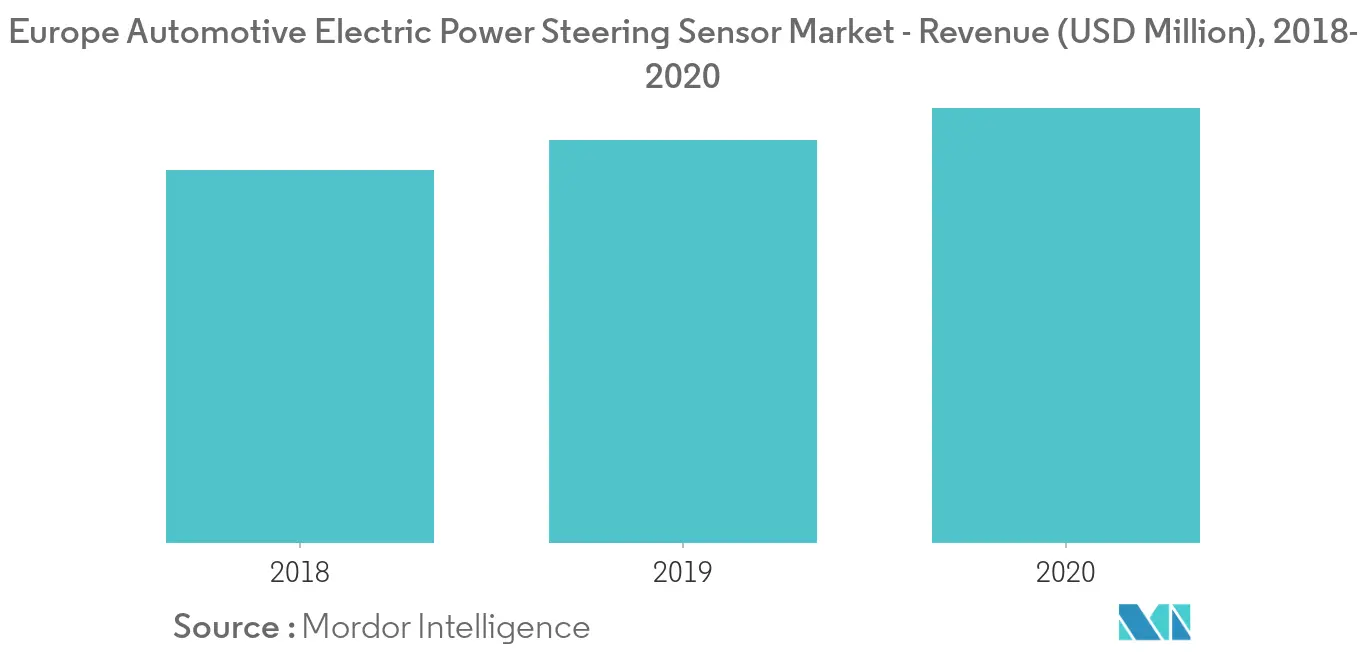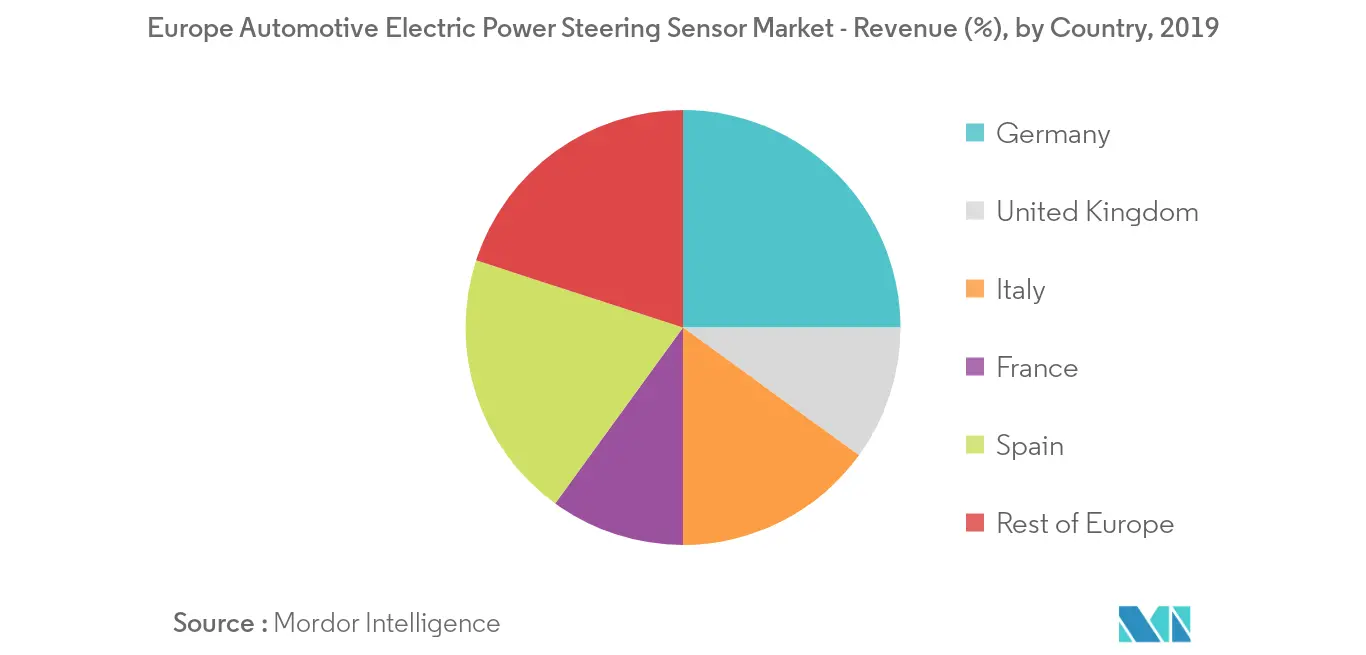Market Trends of Europe Automotive Steering Sensor Industry
This section covers the major market trends shaping the Europe Automotive Steering Sensor Market according to our research experts:
Position Sensors is expected to hold the major share in the market
The evolution of the steering sensor has been in the form of a digital steering position sensor, which uses LED light for sensing technology. The LED light acts along with the wheel that is used as a shutter and an optic sensor that measures interruption in the light. The sensors produce a digital square wave signal with the frequency depending on the speed with which the wheel is turning. The signal is low when the wheel is kept straight and increases as the wheel is turned away from the center. Some of the recent advancements of the sensors are
In 2018, Hella showcased its steering and braking solutions in which it displayed the steering angle sensor, Torque and Angle Sensor (TAS). These sensors are based on contactless inductive position sensor (CIPOSA) technology, which measures the torque and angle of the steering wheel with accuracy.
Whereas in 2019, Infineon Technologies AG has launched a linear Hall sensor which was developed in accordance with the safety standard ISO26262 mainly for automotive applications. The XENSIV TLE4999I3 provides the highest level of functional safety (ASIL D). These include various features such as electric steering systems, electric throttle control systems, and pedal applications.
Similarly, in 2019, Guardian Optical Technologies launched its sensor technology. The company main motto is to reduce the number of sensors with a single sensor, as the new technology has the property of combining around 15 applications in one. Some of the features are passenger occupancy, forgotten items, forgotten passengers and driver monitoring, also company's in-cabin safety solution features Optical Cabin Control (OCC), look after the driver alertness by measuring various factors such as eyelid closure, head position, hand position on the steering wheel, and if the driver is holding a phone or not.

Spain is Projected to hold Significant Share in the Market:
Spain which is the 2nd larger car manufacturer in Europe after Germany has the presence of 9 multinational brands with 17 manufacturing plants. Around 90% of the vehicles manufactured in Spain are exported to more than 130 Countries.
But the country has faced huge setbacks due to the COVID-19 pandemic as all companies in the auto industry are expecting a loss of 20% or more revenue of this year, while others are anticipating negative results. To mitigate the effect of the outbreak government has unveiled a relief package for the Spain auto industry which accounts for the country's 10% of GDP.
On June 15, 2020, Spain government layout a Euro 3.75 billion plan with 21 measures for helping the automotive industry. Some parts of the total amount will be provided as direct aid, while around euro 2.7 billion will be provided through soft loans for the sector through the state-owned bank Instituto de Credito Espanol (ICO). Under this plan, new car buyers will receive between Euro 400 and Euro 4,000 subsidy for purchasing a new car that meets certain requirements.
Whereas, the development of new technologies that utilize nano and micro technology will help Spain's automotive steering sensor market grow. Increased R&D in the sensor industry is creating new opportunities for technological advancements that open up new horizons for steering applications.


